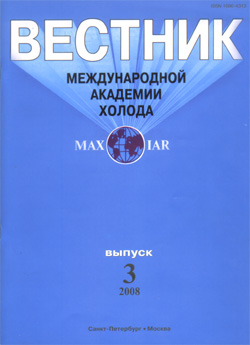
Exergetic analysis of LNG regasification techniques

Annotation
LNG regasification facilities are abundant in natural gas consuming countries. Energy efficiency enhancement of these facilities is a crucial task. Most of the previously built facilities do not use cold of LNG for by-production, whereas there are several modern techniques allowing energy and some other by-products to be produced along with regasification. The article estimates energy efficiency characteristics of several regasification techniques. Models describing regasification systems using Rankine and/or Brayton cycles, air and gas separation are studied. Regasification systems are compared by such energy efficiency characteristics as exergy efficiency, specific lost work, specific fuel consumption, overall energy efficiency etc. The use of Brayton cycle allows increasing exergetic efficiency of regasification to 51% that is almost by 4.5% more than for organic Rankin cycle (with fluoroform). Specific fuel consumption increases also as its combustion energy goes for working medium heating to produce more energy. Specific additional energy consumption reduces by 20 kW h/t compared with the use of coil. That makes it applicable for small regasification units. However, for big regasification facilities combination of regasification with с LNG fractionation or air separation seems to be the most useful.
Keywords
Постоянный URL
Articles in current issue
- Impact of saccharification method on barley mash fermentation parameters and quality of fermented mash
- Innovative technology of canned pear compote for baby food
- The use of transglutaminase in milk processing
- The optimization of fish-plant snacks formula
- Study of the process of freezing and thawing out of the fruit juices
- Experimental research of refrigerating system effective radiation into space
- Exergetic analysis of LNG regasification techniques
- Background for the use of gas-static bearings in screw compressors
- Organizational aspects of red blood cells cryopreservation in the activities of blood service in Russian Federation
- The use of axial-radial impellers in halocarbon refrigeration centrifugal compressors
- Pilot study of Ekokhol 1 ozone-safe mix with the use of mineral refrigerating oil
- Generalization of data on second virial coefficient of methane and its fluoroderivatives
- Optimization of parameters of process of receiving biofuel by methods of mathematical modeling
- Thermal conductivity of mixtures of the rarefied gaseous hydrofluorocarbons
- Measurement of polymeric composite materials radiation coefficient
- Tendencies and dynamic of non-liner climatic changes under the influence of solar constant and Bond's albedo long-term variations
